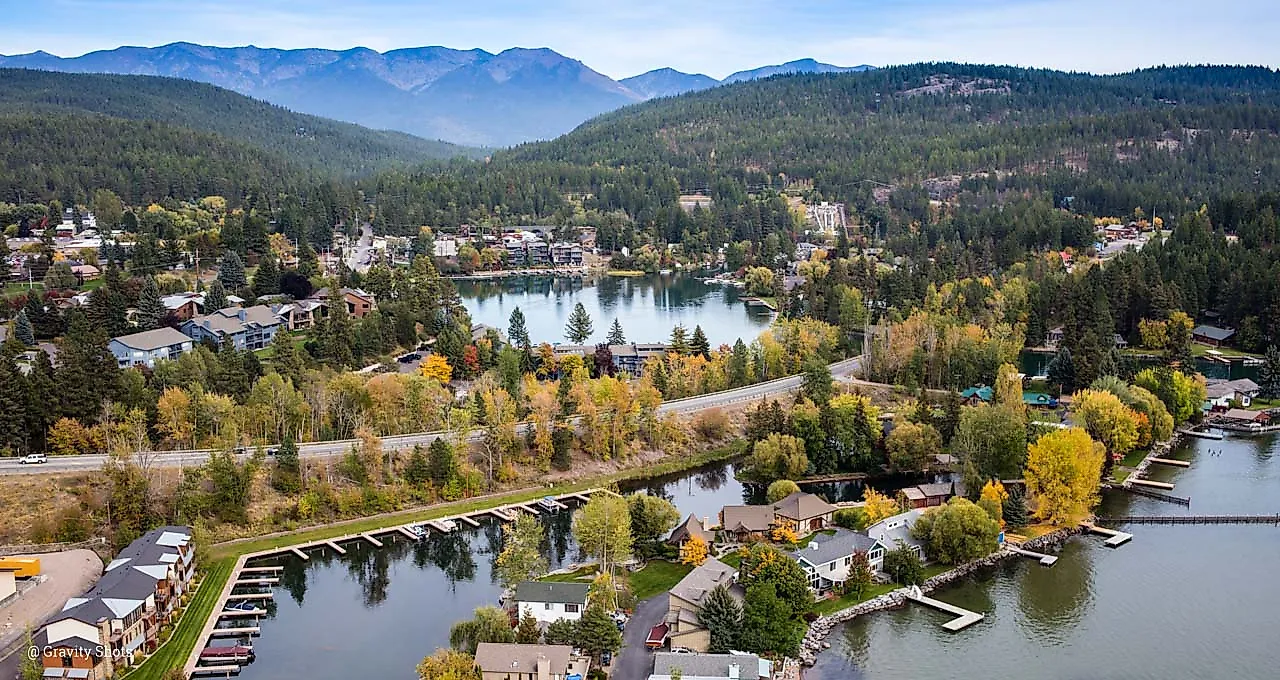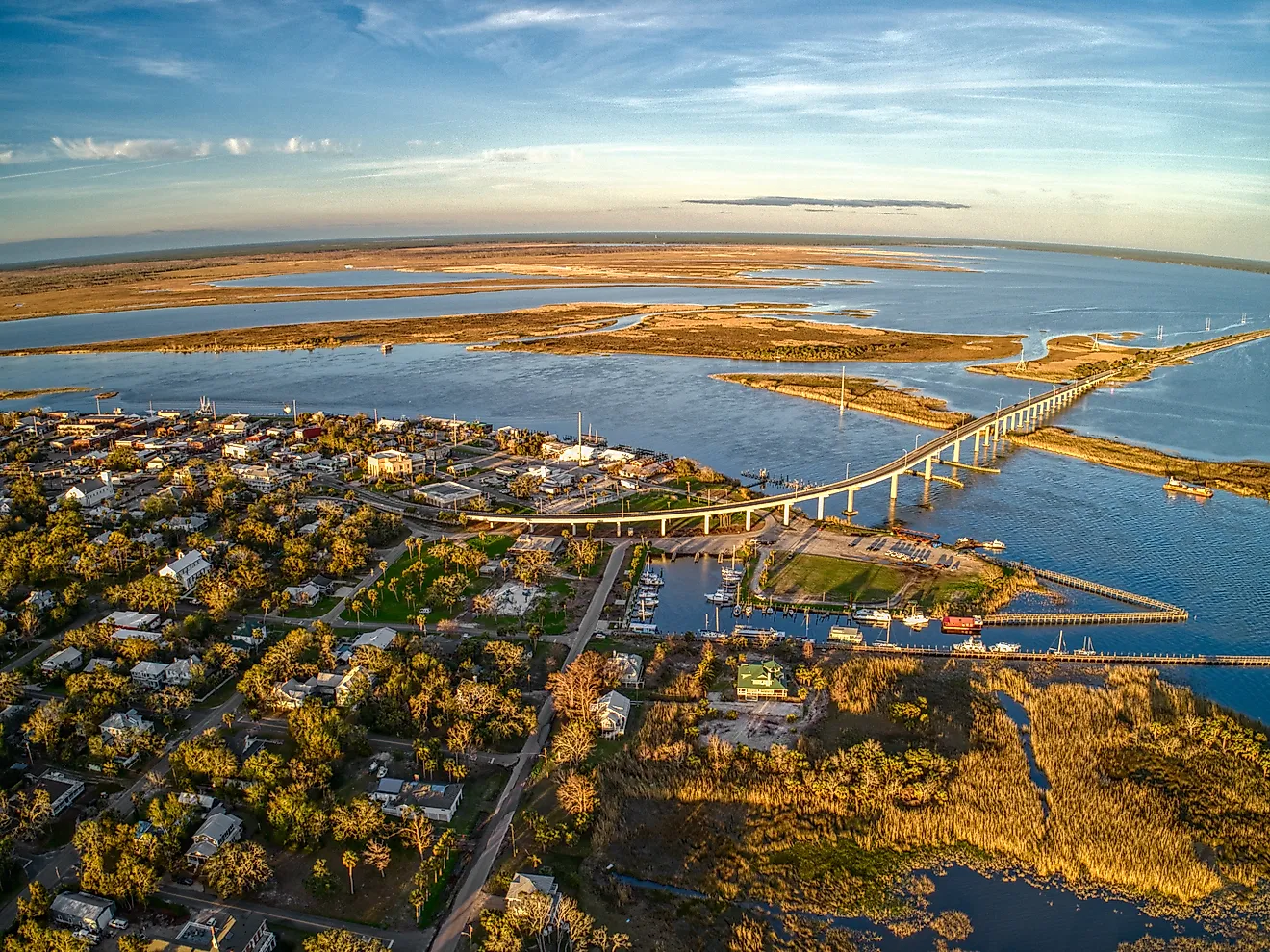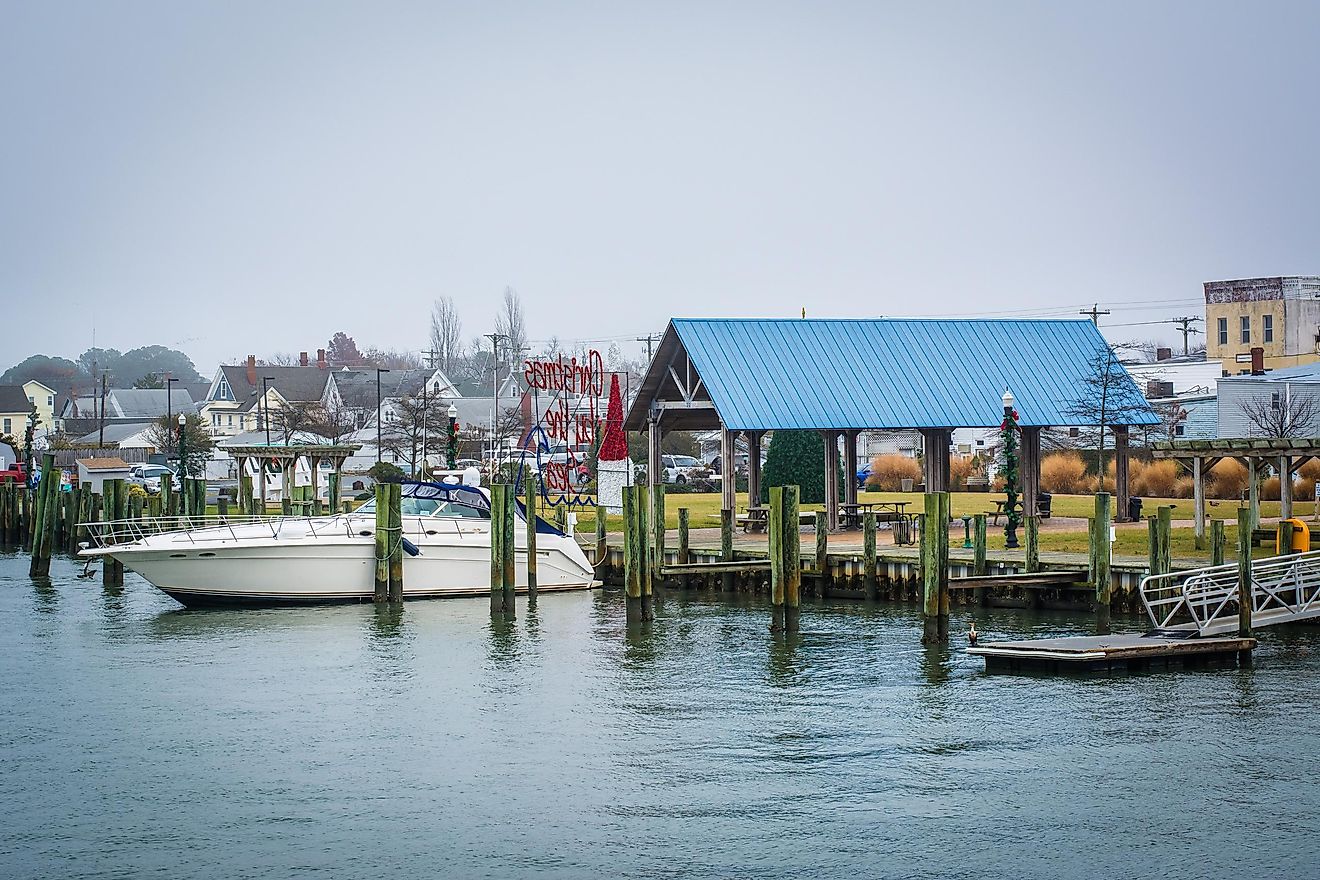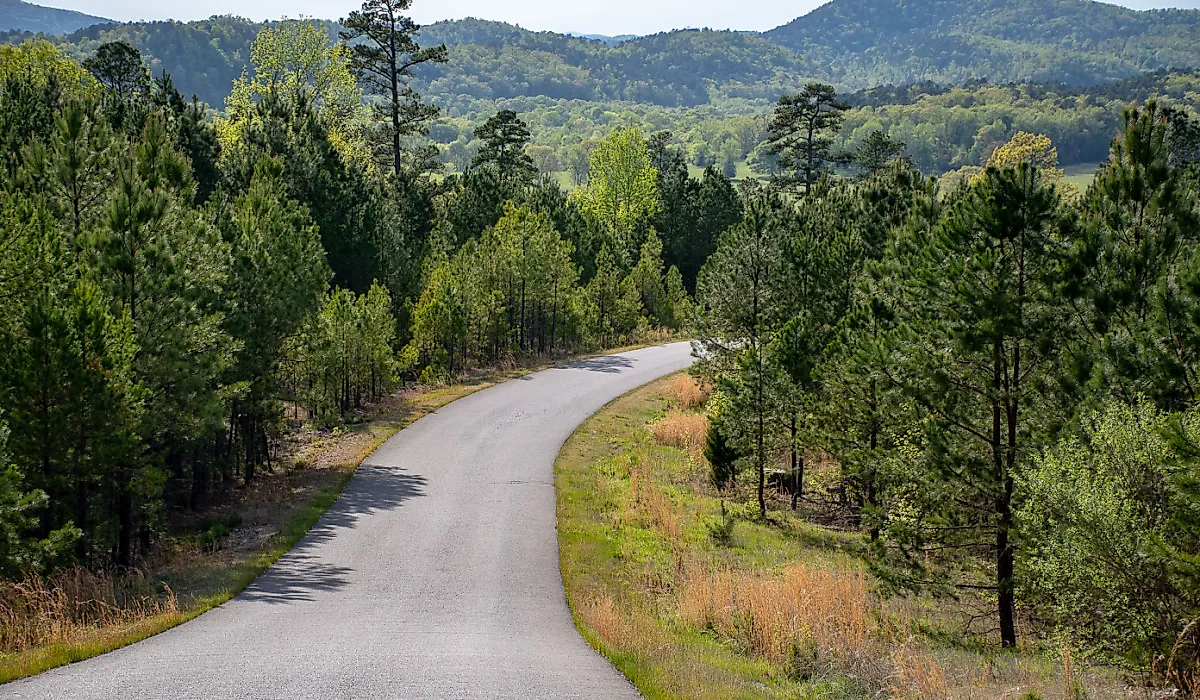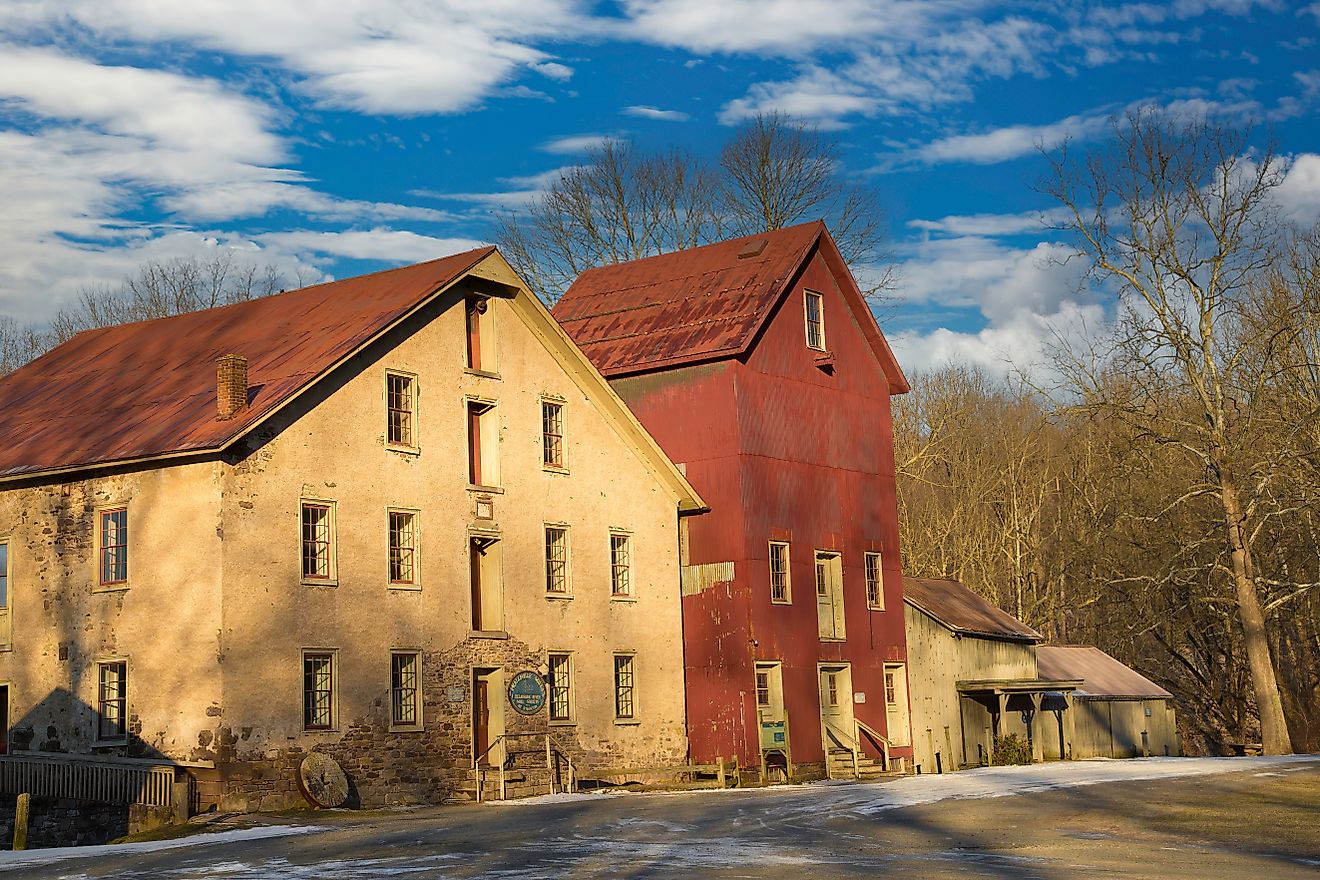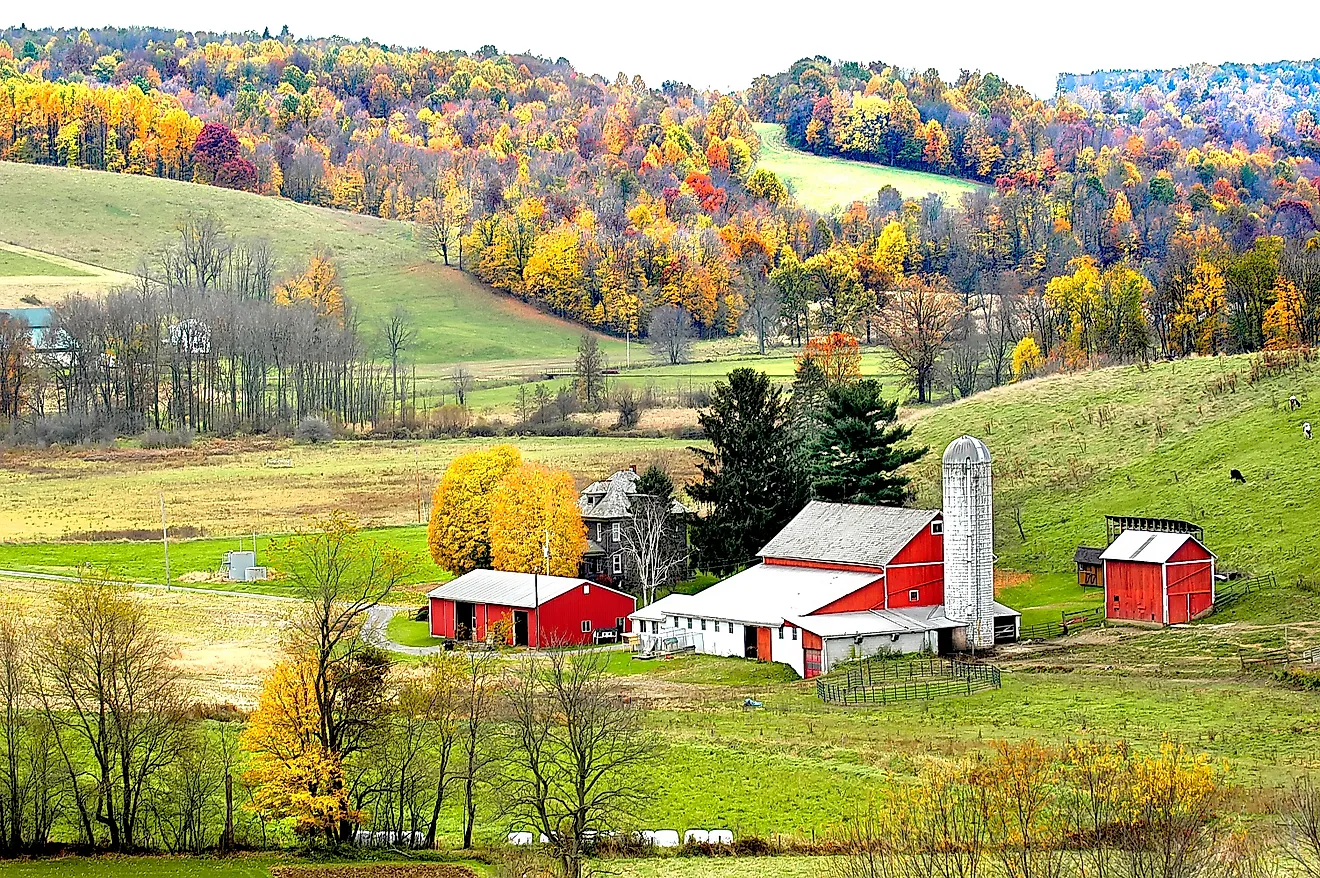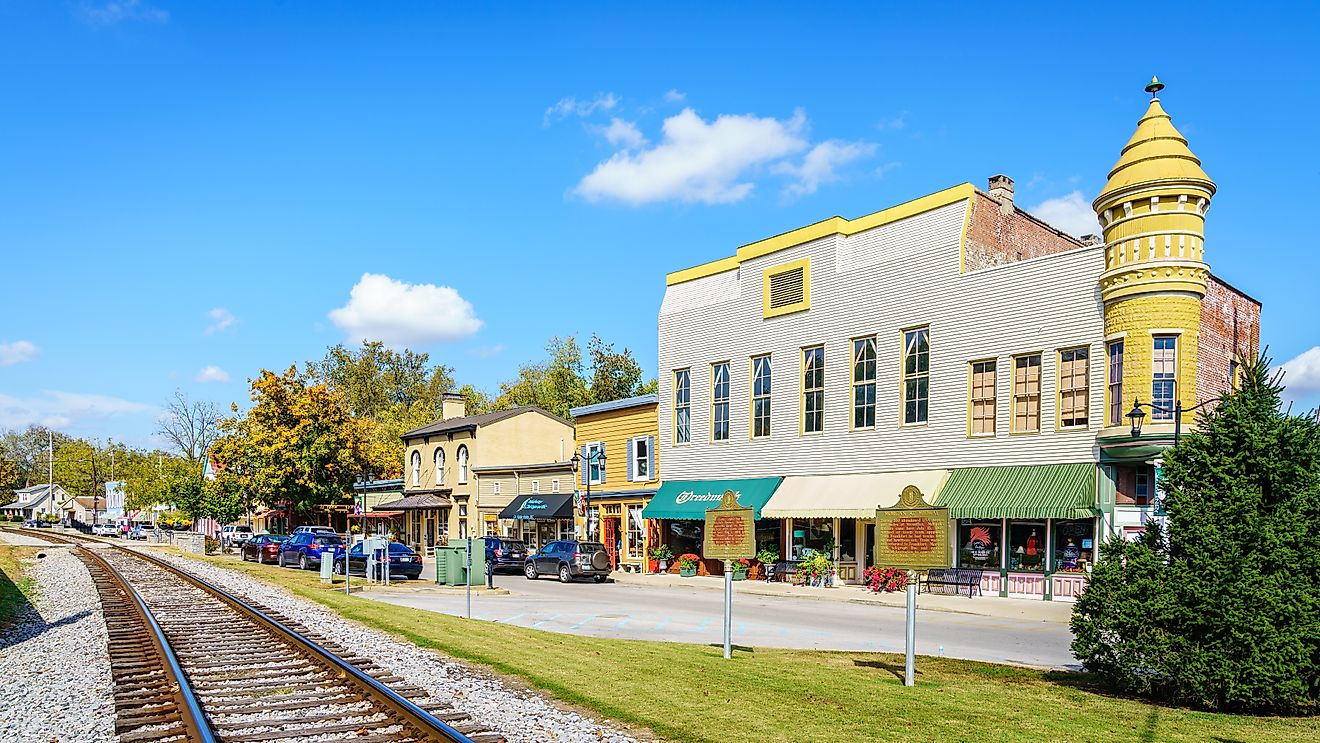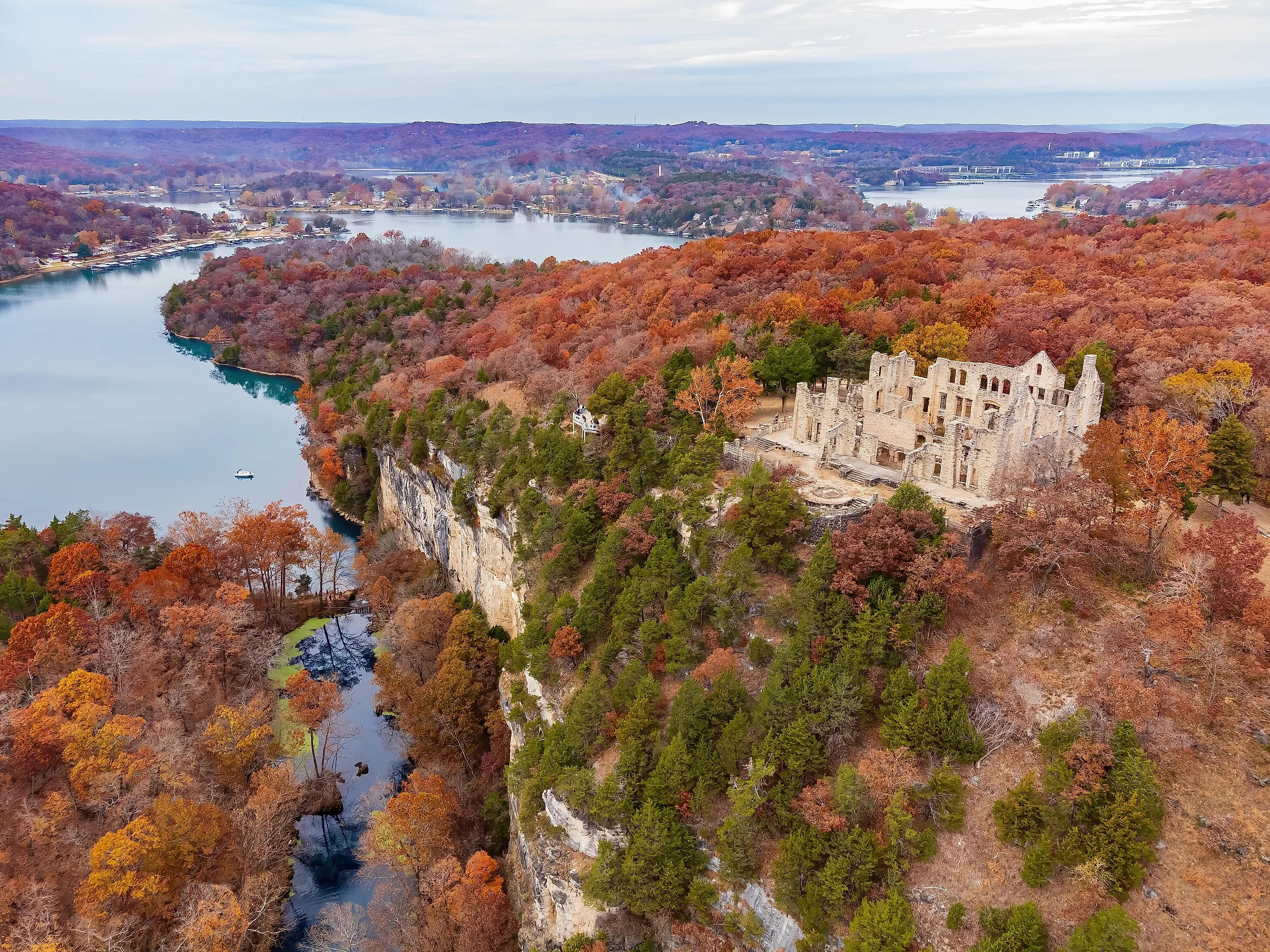
6 Best Natural Wonders To Visit In Missouri This Year
When it comes to Midwest states with natural wonders to explore, Missouri leads the field. From ancient granite formations to sprawling cave systems, the Show-Me State has countless geological wonders that have been in the making for millions of years. The best of them show off Missouri's remarkable terrain to stunning effect and feature everything from the state's highest peak to its most spectacular subterranean phenomena.
Dig a little deeper (pardon the pun) and you’ll uncover a geological diversity that’s unique from any other in the country. Its position at the crossroads of several major landforms is the biggest factor in this natural splendor, with the ancient St. Francois Mountains, some of the oldest exposed rocks in North America, rising from the southeast while karst topography creates stunning cave systems throughout the Ozarks. And it’s this unique combination of volcanic activity, erosion, and underground water systems that has sculpted a landscape quite unlike anywhere in the Midwest.
Ha Ha Tonka State Park
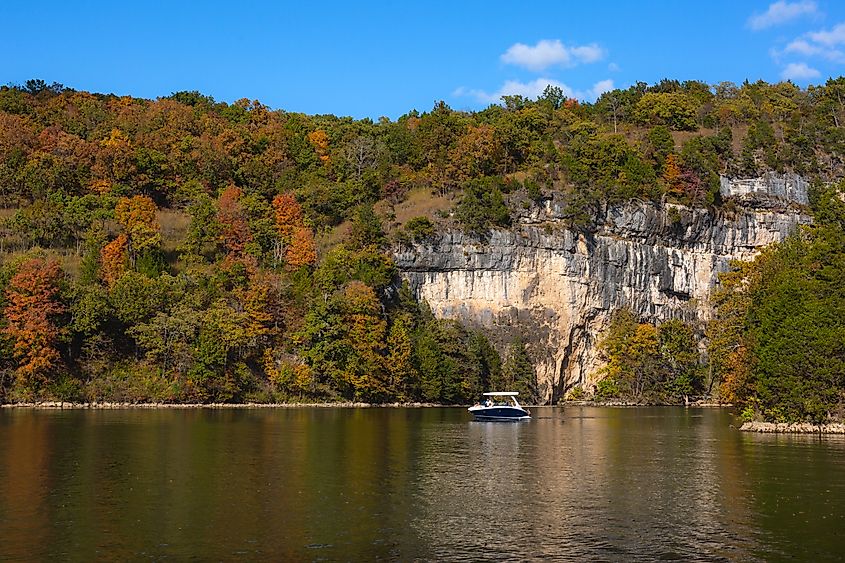
One of Missouri's most intriguing geological wonders, Ha Ha Tonka State Park covers an area of 3,600 acres on the Niangua Arm of the Lake of the Ozarks. The park's remarkable karst features include sinkholes, caves, a massive natural bridge, sheer bluffs rising 250 feet above the water, and Missouri's 12th-largest spring. It all adds up to a remarkable network of caves, including the Devil's Kitchen and Turkey Pen Hollow, both accessible via the park's 16 miles of hiking trails.
The park's centerpiece is the Ha Ha Tonka Spring. Famous for discharging an average of 56 million gallons of water daily from an underground cave system that collapsed in ancient times, you can see the best of the springs by following a network of boardwalks and elevated walkways along the crystal-clear stream as it flows to Lake of the Ozarks. Other highlights include the Spring Trail, a moderately challenging climb of over 200 steps from the spring to the castle ruins, the 70-foot-long natural bridge, and the Colosseum sinkhole.
When To Visit: Try to visit in either spring or fall as temperatures will be milder, while autumn, of course, sees the foliage put on spectacular displays of colour. The park remains open daily from April through October from 7 a.m. to sunset, and from 8 a.m. to sunset November through March.
Elephant Rocks State Park
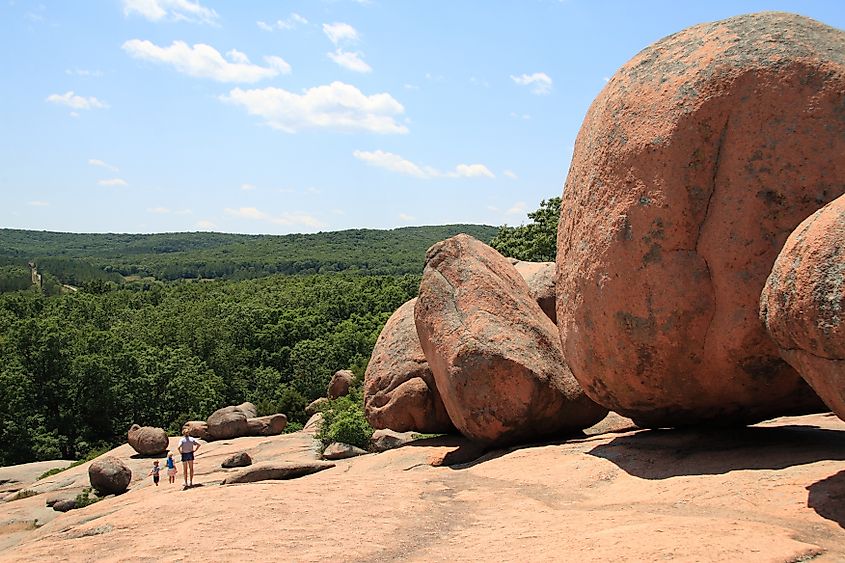
Elephant Rocks State Park preserves an extraordinary geological phenomenon where massive pink granite boulders, formed from 1.5-billion-year-old Precambrian granite, stand end-to-end like a line of circus elephants. The largest of these ancient stones is aptly nicknamed Dumbo and weighs an impressive 680 tons. These imposing formations were the result of underground weathering along fracture joints and then surface erosion that later exposed these ancient giants, leaving them balanced precariously across the landscape. It’s indeed a breathtaking sight, and one well worth exploring.
The one-mile-long Braille Trail, Missouri's first such route designed specifically for visitors with visual and physical disabilities, winds through the main boulder field with interpretive signage in both standard text and Braille. Branching trails lead adventurous visitors through Fat Man's Squeeze, a narrow passage between towering boulders, and The Maze, a 100-foot section of scattered granite giants. The Engine House Ruins Trail extends from the main loop to remnants of the area's granite quarrying past, where you can explore the stone foundations of a railroad engine house that once serviced trains hauling that famous Missouri Red granite to construction sites nationwide.
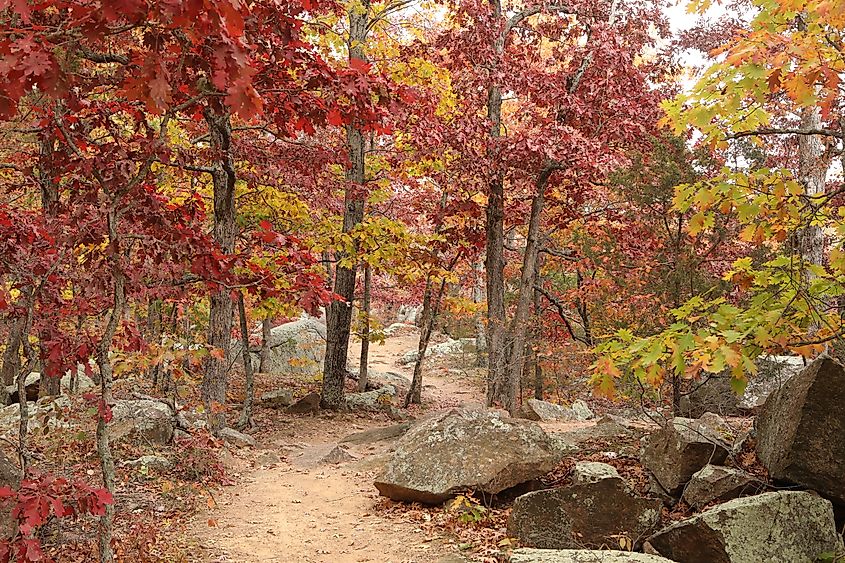
When To Visit: Spring and fall offer ideal visiting conditions, with wildflowers blooming among the rocks in April and May, and autumn foliage creating stunning contrasts against the pink granite. The park provides picnic areas scattered throughout the trees, a playground, flush restrooms, and vending machines for visitor convenience.
Johnson's Shut-Ins State Park
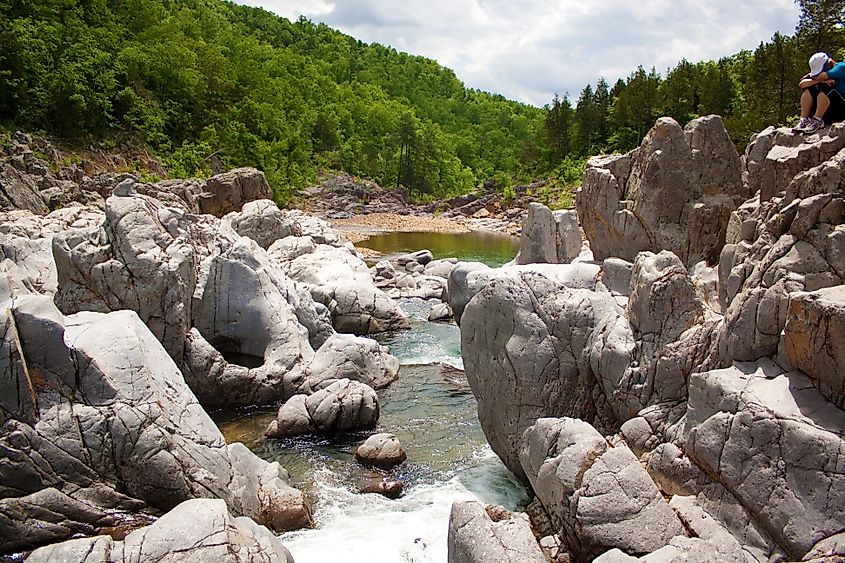
Set along the East Fork Black River, Johnson's Shut-Ins State Park is where ancient volcanic rock has created a natural water park. The term "shut-in" describes where erosion-resistant rhyolite and dark diabase dikes force the river through narrow channels, sculpting amazingly smooth chutes, deep pools, and stunning waterfalls. These igneous formations now provide thrilling natural water slides and swimming holes that attract thousands of visitors seeking relief from summer heat and an unusual natural waterpark.
The park's extensive trail system is a must-do and includes a quarter-mile paved walkway to observation decks overlooking the shut-ins, the challenging Scour Trail that reveals the dramatic effects of the 2005 flood, and the 10-mile Goggins Mountain Equestrian Trail loop. A portion of the Ozark Trail also passes through the park, connecting to nearby Taum Sauk Mountain State Park for those ambitious enough to want to explore further.
When To Visit: If swimming’s your thing, May through early September is a great time to visit; be sure to wear water shoes due to the rocky surfaces.
Onondaga Cave State Park
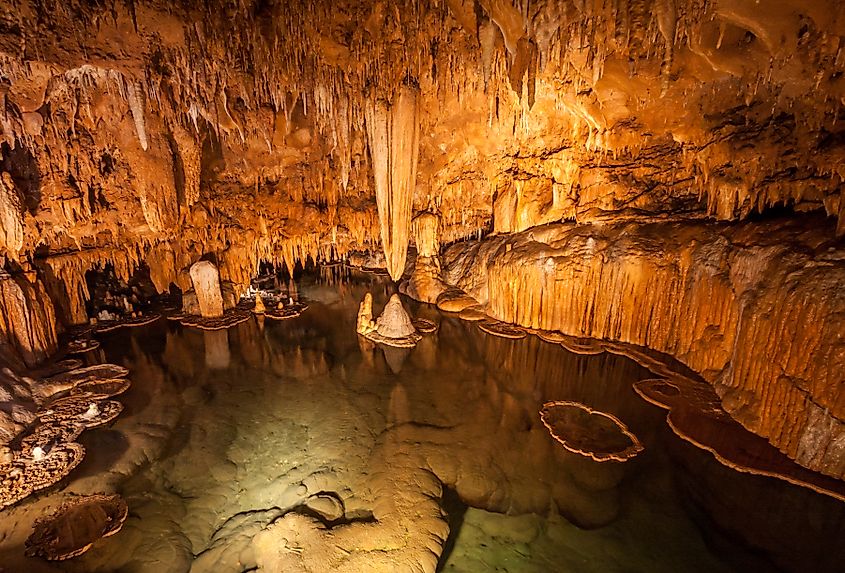
Onondaga Cave State Park protects one of America's most spectacular cave systems. Designated a National Natural Landmark, the cave is a constant 57 degrees Fahrenheit year-round and is home to massive stalagmites, dripping stalactites, and still active flowstones. Best seen as part of an Onondaga Cave tour, expect to spend around 90 minutes on this amazing one-hour underground adventure.
Along the way, you’ll follow lit paved walkways past formations like the massive King's Canopy, the delicate Twins, and countless other speleothems. A river still flows through portions of the cave, continuing the sculpting process that began millions of years ago. Cathedral Cave, the park's second show cave, features two-hour weekend lantern tours that begin with a hike up Deer Run Trail to the cave entrance, followed by 90 minutes exploring the cavern by lantern. Above ground, the park's Vilander Bluff Natural Area has 200-foot bluffs rising dramatically from the Meramec River, offering spectacular sunset views.
When To Visit: Cave tours are available daily from April 1 through October 31, with the last tour departing at 3:30 p.m. Advance reservations are recommended, particularly for weekend tours during peak season.
Grand Gulf State Park
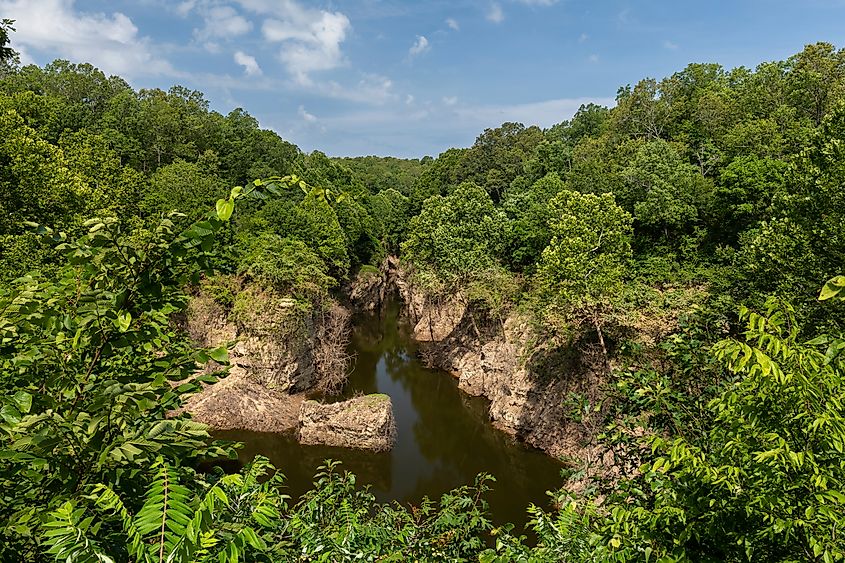
Home to Missouri's famous Little Grand Canyon, Grand Gulf State Park is a must-include on your tour of the state’s natural wonders. Now a National Natural Landmark, this spectacular natural phenomenon formed 1-2 million years ago when a massive cavern developed along a fault line in the dolomite bedrock and then collapsed, creating a chasm three-quarters of a mile long with walls that rise to heights of 130 feet. The 250-foot-long natural bridge that survived spans the gulf with 75-foot clearance beneath and is quite unlike anything you’ll ever see anywhere else in the country, especially as the Bussell Branch flows under the natural bridge. It’s breathtaking.
You can see much of this natural wonder by following the park's interpretive loop trail with its boardwalks and observation platforms providing safe viewing points above the gulf, one of which is specially designed for wheelchair accessibility. Four overlooks offer different perspectives of the canyon, though reaching the most spectacular viewpoints requires hiking off-trail along the rim.
When To Visit: It’s worth noting that the gulf can fill rapidly during heavy rains, sometimes within hours, creating temporary waterfalls as water cascades over the rim. The drainage process may take up to two weeks, during which the normally dry canyon transforms into a raging torrent. Consequently, spring and fall provide optimal visiting conditions, with spring rains creating dramatic water features and autumn foliage contrasting beautifully against the canyon's limestone walls.
Taum Sauk Mountain State Park
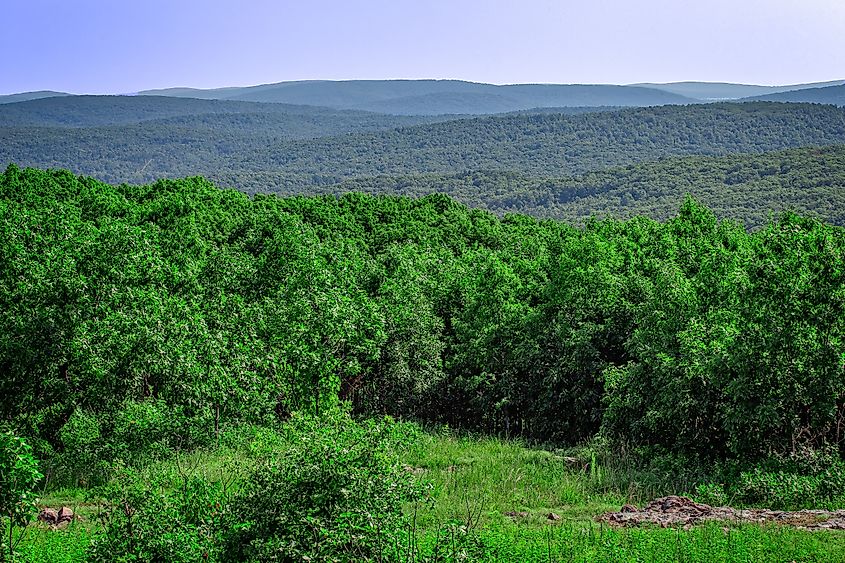
Taum Sauk Mountain State Park is centered on Missouri's highest point at 1,772 feet above sea level. But unlike typical peaked mountains, Taum Sauk presents an elongated ridge oriented north-northwest to south-southeast, formed by ancient Precambrian volcanic activity 1.5 billion years ago. The St. Francois Mountains, including Taum Sauk, are some of the oldest exposed rock in North America, having existed as islands when ancient seas covered most of Missouri during the Paleozoic Era. A paved trail leads to a granite plaque marking the state's highest point, while a nearby lookout tower provides superb views over the surrounding forested landscape.
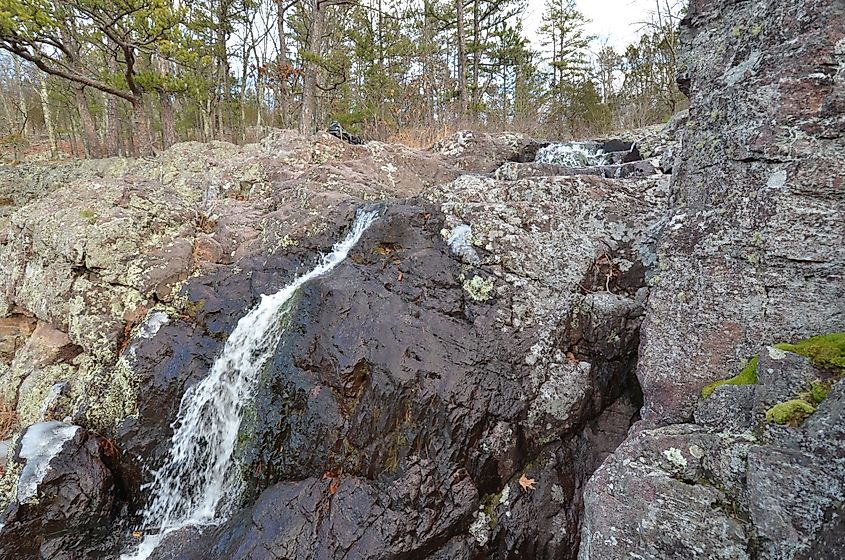
The park's most-visited natural wonder, Mina Sauk Falls, plunges 132 feet in three distinct cascades and is recognized as Missouri's tallest waterfall. The three-mile Mina Sauk Falls Trail loop is the best way to explore and descend through rugged terrain from the highpoint parking area, crossing several streams before reaching the falls.
When To Visit: During wet weather, particularly in spring, the falls roar with impressive volume, while summer often reduces flow to a trickle. Spring brings with it a spectacular display of wildflowers, and in fall, foliage displays draw crowds of leaf-peepers.
The Final Word
If you’ve not yet explored Missouri's natural wonders, now’s your chance. With diverse geological phenomena shaped over billions of years, these six parks preserve not only spectacular scenery, but also critical habitats and irreplaceable geological heritage. Whether you’re idea of outdoor fun is exploring natural water parks or seeking a little solitude atop ancient mountains, Missouri's best natural attractions deliver unforgettable experiences that are guaranteed to connect you with some of the USA’s best scenery.
